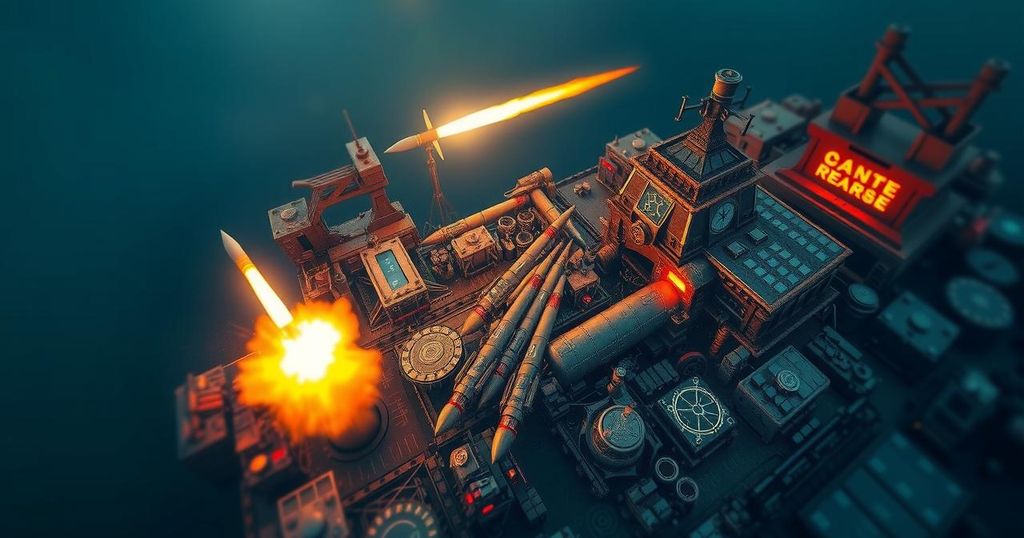Escalating Missile Use Marks New Phase in Ukraine-Russia Conflict

Recent escalations in the Ukraine-Russia war include Ukraine’s use of British-supplied Storm Shadow missiles targeting Russia and claims by Putin of deploying a new hypersonic missile against Ukraine. Tensions have heightened, particularly after Zelensky accused Russia of treating Ukraine as a missile testing ground, while the Pentagon confirmed the use of a new Russian missile type. This evolving conflict involves complex dynamics, including foreign troop participation and implications for NATO and international relations.
In the ongoing conflict between Ukraine and Russia, recent developments have intensified tensions, particularly following the use of long-range missiles supplied by the UK and US. Ukrainian President Volodymyr Zelensky accused Russian forces of treating Ukraine as a testing ground for missiles, highlighting a missile strike in Dnipro that he characterized as meeting intercontinental ballistic missile (ICBM) standards. President Vladimir Putin countered by announcing that a new hypersonic medium-range missile, the Oreshnik, was deployed to target a Ukrainian military installation, citing a need to respond to what he termed as aggressive NATO actions.
In a new escalation of the conflict, Ukrainian forces have reportedly used British-supplied Storm Shadow missiles for strikes inside Russia. This marked a significant shift in Ukraine’s military strategy, raising the stakes as Russian officials have claimed that Moscow could target any nation whose weapons are utilized against it. Moreover, the Pentagon confirmed the employment of a new experimental intermediate-range ballistic missile by Russia in its attacks on Ukraine, highlighting the evolving nature of this conflict.
In response to these developments, the US and its Western allies are reassessing strategies and aiding Ukraine in its defense efforts. The involvement of foreign troops, including North Korean soldiers in the conflict, presents additional concerns. Analysts emphasize that the loosening of restrictions on missile use could alter the battlefield dynamics, further complicating the situation as fighting continues.
The ongoing war between Ukraine and Russia has witnessed significant military escalations and shifts in strategy by both sides. Initially centered around territorial disputes, the conflict has evolved into a broader proxy struggle involving various international players, including NATO countries supporting Ukraine and Russia leveraging its military capabilities. Recent reports indicate the increasing use of advanced missile systems by both nations, marking a transition into a more dangerous phase of the conflict. The implications of these developments not only affect the combatants but also the geopolitical landscape in Europe and beyond, highlighting a complex interplay of military power and international relations.
The situation in Ukraine remains precarious as both sides leverage advanced weaponry in their military campaigns. The introduction of long-range missile capabilities by Ukraine and new Russian hypersonic missiles signals a significant increase in the stakes of the conflict. As foreign military involvement expands and the dynamics of warfare evolve, the potential for broader regional instability looms. It is imperative for international actors to remain vigilant and responsive to these developments to mitigate further escalation.
Original Source: www.independent.co.uk








